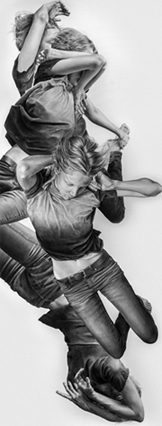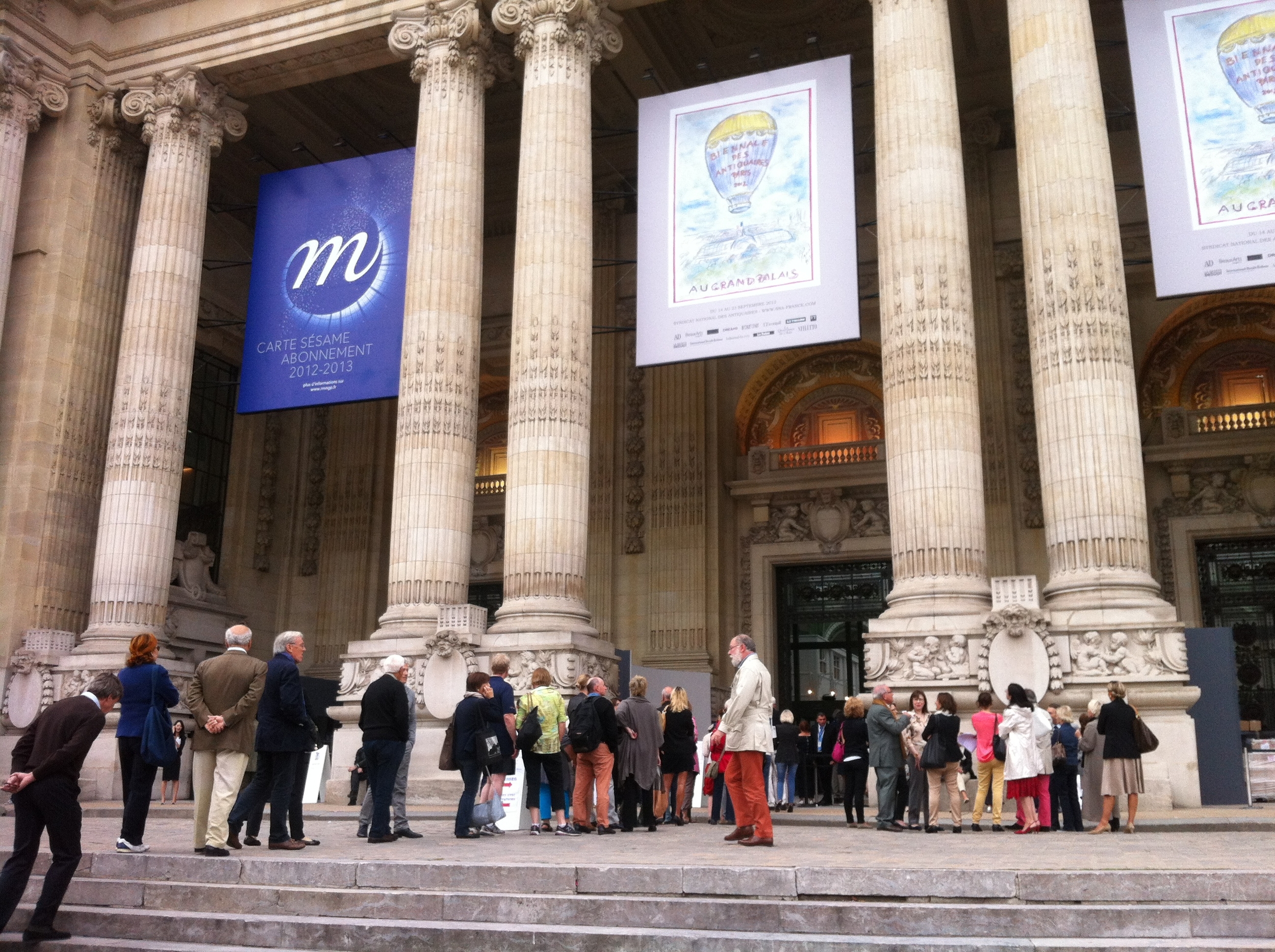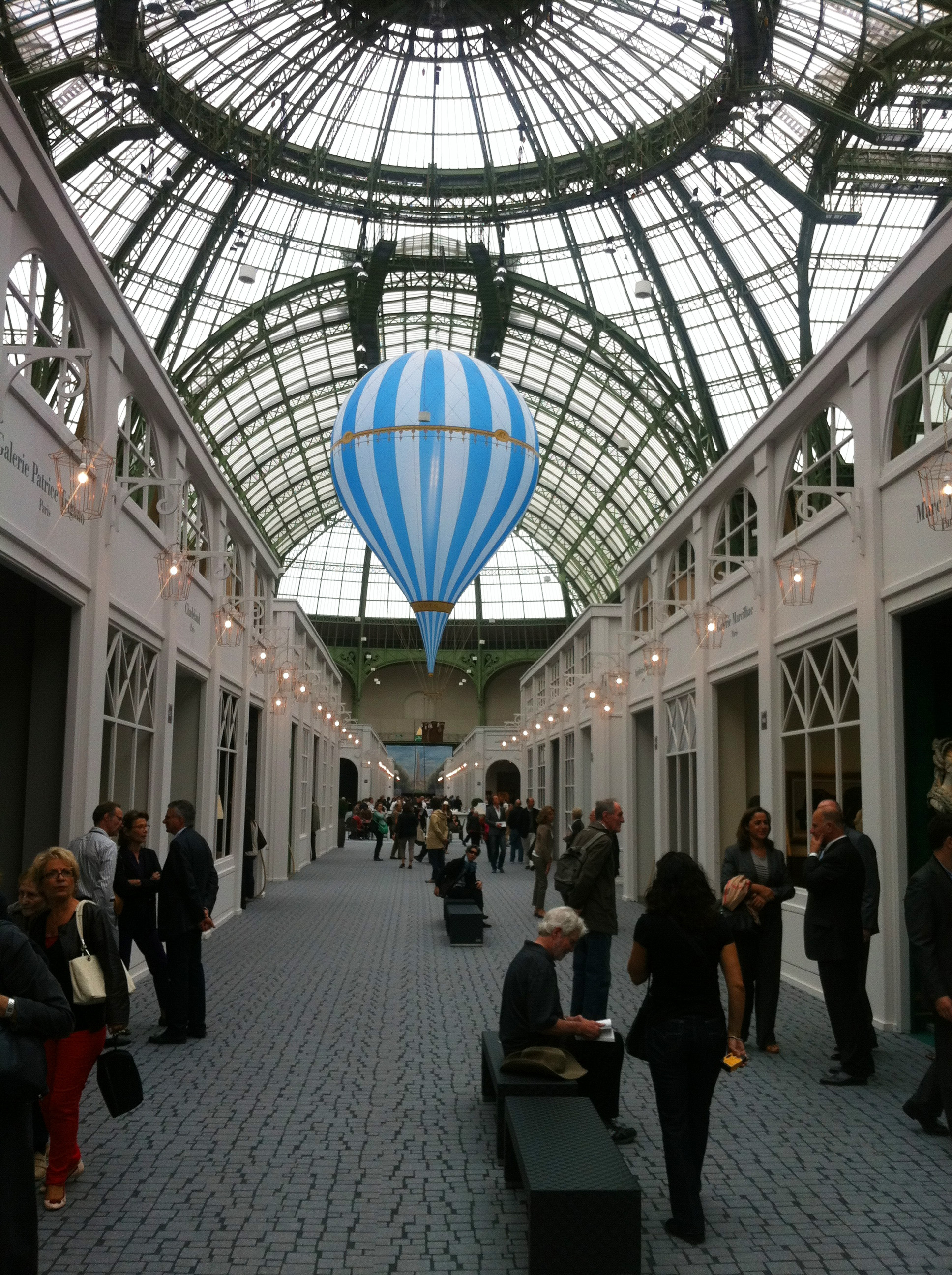The season may be winding down according to the calendar, but there’s still a lot of life left on the art scene.
It may be because there are so many artists and so little room in which to fit them. That is why group shows were invented. I saw so many on Saturday that I no longer remember where they were as I wandered the crowded streets of Chelsea, packed with tourists (I always figure if they are overweight and in shorts they are tourists) and art students. The buyers were probably in the Hamptons which accounted for the absence of directors in situ.
I take that back about not remembering group shows – there was “5 Rooms” at Robert Miller Gallery that included Yayoi Kusama with a paint decorated upright piano in red with her overall obsessively repeated decorations in black and white.
This is in no way a sequential tour since I just dumped the press releases for the shows in my MZWallace (designer married to David Zwirner) bag and they were scrambled when taken out this morning.
There were a few surprises, at least to me, at the Luhring Augustine exhibition of works by Philip Taaffe who used to be such a straight lines and bold dark color guy just a few years back. Now he is into gestural painting with hand-drawn relief plates, linocut printings, gold leaf and marbeling, with sources from around the globe which he has traveled a lot. Almost as much a jolt as when Stella went from minimalist work into phantasmagorical. There was a lot more fantasy at the Pace show of Tim Hawkinson, but the gallery wasn’t handing out handouts so I can’t give you the names of the pieces.
Leila Heller always has something interesting to see. This time it was something called “The Consumption” by Negar Ahkami, which is basically a bunch of scared figures being consumed by whirling blue tsunami waves of destructive force. She also showed twisted rugs by Faig Ahmed, oddly disturbing weavings of distorted carpets that at first seem standard but after a second look you realize there’s something crazy about them.
What made the tedious cross town journey to Chelsea totally worthwhile was my visit to Galerie Lelong where there was an extraordinary exhibition of the late works (1981-85) of Ana Medieta that included a segment from a documentary film currently in post-production about the artist’s fellowship and residency at the American Academy in Rome. There was also a film depicting earthen silhouettes of the artist’s body in a landscape in which gunpowder is ignited and which are related to her floor sculptures, similar to those she created in the landscapes of Cuba, Iowa and Mexico. This was the 9th solo exhibition of Medieta’s work at Lelong. I wondered that there was such a trove to show since the artist’s death was so untimely.
There was a beautiful exhibition of Linda Stojack’s paintings – the operative word being “beautiful” because the artist’s evocative images latch on to your imagination with their lush palettes, half formed images and striking lines. It’s old fashioned expressionistic painting with a contemporary twist. At the same gallery was the powerful work of Bruno Romeda, an Italian artist who deals with simple forms in a complex way.
Maybe I was tired by then, or maybe it was hard to get out of the way, but the rope sculpture of Specer Finch at James Cohan Gallery almost got me. This site-specific installation called “Fathom” (a measure six feet in length used to measure to depth of water) is composed of a very, very long (120 feet) twisted heavy rope to which are attached paper tags and swatches of color that the press release says may “best be considered a drawing of Walden Pond.”
At Andrea Rosen Gallery there was more conventional unconventional art in the form of Wolfgang Tillmans’ 11th one person show that consists of works selected from a four-year project begun in 2008 and includes a wall of 128 pages from Tillmans’ newest book Fespa digital/Fruit Logistica.
At Bruce Silverstein’s was Rosalind Solomon’s exhibition that drew crowds – “Portraits in the Time of AIDS, 1988, which brought in groups led by lecturers. It was too crowded to wait and figure out how the talks were conducted but it might be worthwhile to return on a quieter day to review this award winning photographer’s third gallery show.
There were multiple other exhibitions to remember from last Saturday, but it’s not possible to skip three – “Landscape Painting in the Civil War Era” at Driscoll Babcock, New York’s oldest art gallery, taken from the gallery’s holdings of Hudson River School paintings. Refreshing to see these old friends like Blakelock, Durand, Inness, Kensett and Fitz Henry Lane (gave his name in full because just writing ‘Lane’ won’t do it).
At Friedman Benda the first solo gallery exhibit in the United States starred the Campana Brothers’ “Concepts,” a really unusual body of cowhides that include a wall-mounted bookshelf, table, and standing shelf; a “Racketz’ collection of chairs and a screen in vent brass with nylon stitched base and hand-stitched motif made from remnant Thonet chair backings, A cabinet made out of tanned and leathered skin of the world’s largest fresh water fish and a sofa and chari created out of a series of life-like stuffed alligators. Naturally the brothers are from Brazil. The editioned alligator sofa is $90,000.
Really tired now so I’ll wind up with a visit to Gagosian Gallery where I took in two outsized Venus sculptures in polished stainless steel, polychromed Hulk statues, a black granite Gorilla, a humongous balloon swan, rabbit and monkey of monumental scale, standing huge and gleaming in a light filled huge cavern at the rear of the gallery. Koons sculptures are always flawlessly executed and shiny. One tiny finger print would throw the whole show out of kilter. There will have to guards galore at the Whitney Museum when it presents a major retrospective of his work in 2014.
Okay, quickly, what else did I see? “Chasing the Light,” Deborah Dancy’s oils on canvas at Sears-Peyton Gallery Jannis Kounellis’ classically composed installations of coal, wool, iron, glass and stone, mixed with personal articles like overcoats, shoes and hats at Cheim & Read; small dreamlike paintings by John Lees at Betty Cunningham Gallery, and finally, Christopher Evans’ clearly delineated landscapes at Fishbach Gallery.
Whew! I had no idea I had gotten around so much in just a few hours, and still had time and shoes enough to get uptown and shop. It just proves that even though those who pass for fashionable in this city absent themselves (or never leave their air-conditioned apartments) on weekends it doesn’t mean the city dies. Museums are still open, galleries still operate, artists still work, dealers still sell. So much art, so little time.
















